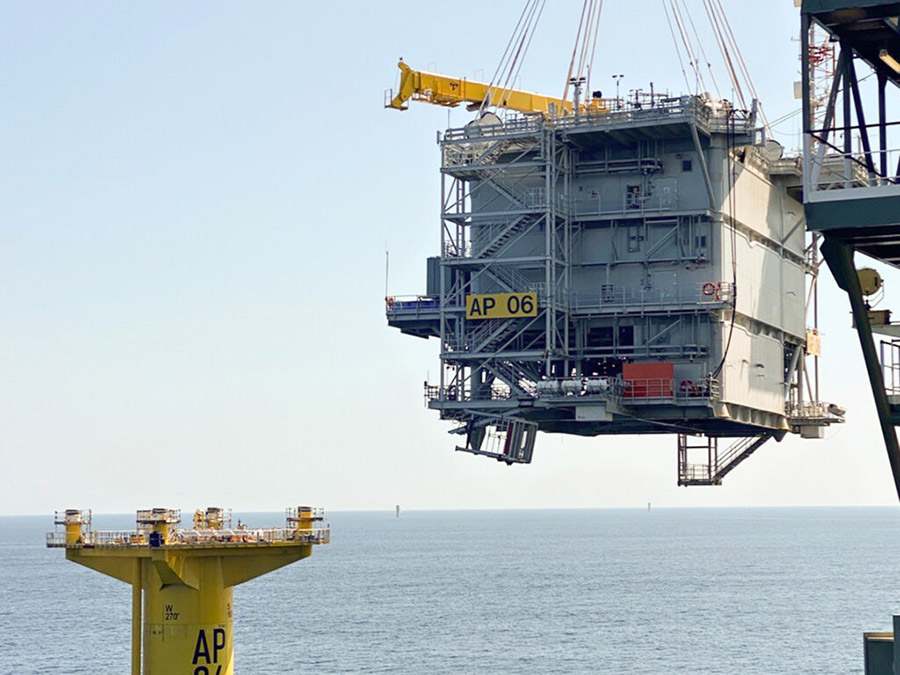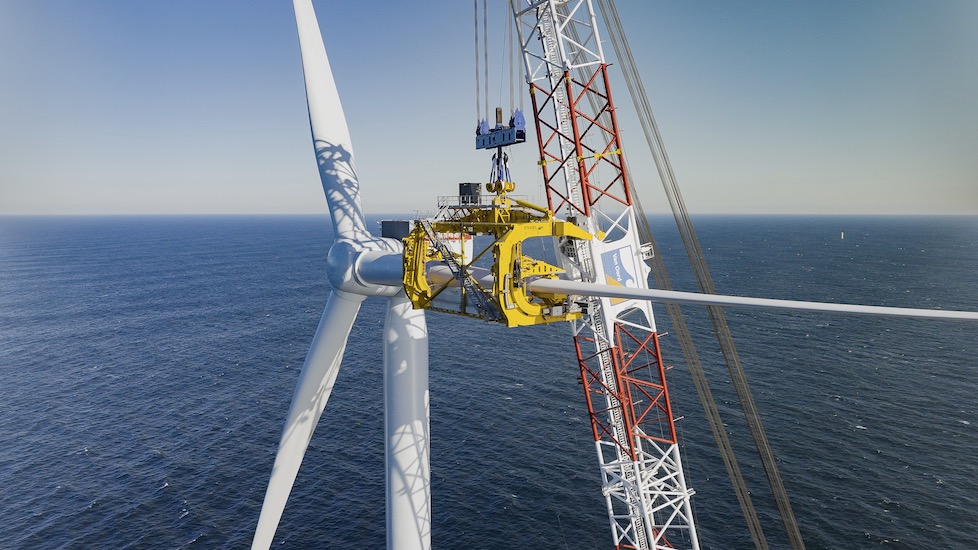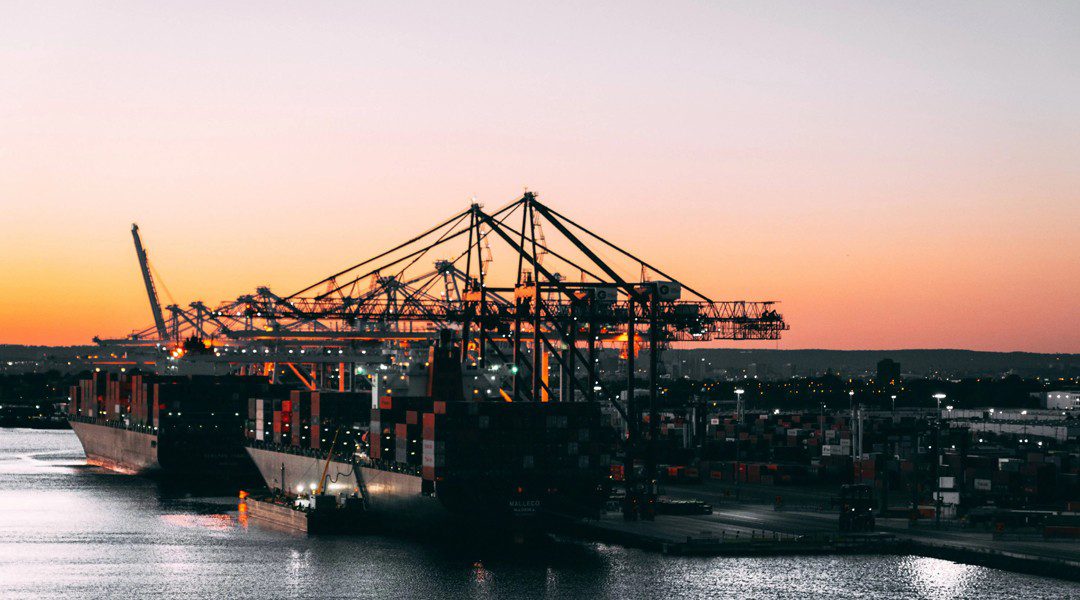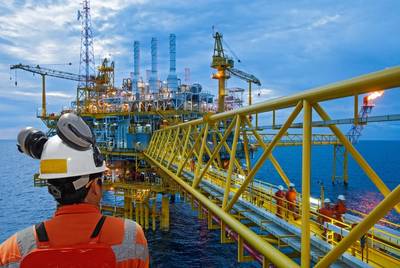Despite financial gyrations in the U.S. offshore wind energy market that have caused project delays and cancellations over the past two years, America now has joined other world nations in having energy generated for the first time from a utility-scale facility.
That U.S. clean energy milestone was reached with the early December announcement that the 132-MW South Fork project off New York successfully sent power to the state grid, in reaching its onshore connection point in East Hampton, Long Island. The estimated $627-million project is located 35 miles east of Montauk.
“New York's nation-leading efforts to generate reliable, renewable clean energy have reached a major milestone," said Gov. Kathy Hochul, stating that it will eliminate up to 6 million tons of carbon emissions each year. “South Fork Wind will … demonstrate to all that offshore wind is a viable resource New York can harness for generations to come."
Two of 12 Siemens Gamesa-made turbines that will power the project being built by a joint venture of developer Orsted and Connecticut utility Eversource, were installed —with the remaining 11-MW structures to follow through early 2024, the team estimates.

Kiewit-made offshore substation for South Fork project off Long Island, N.Y. was installed earlier this year.
Photo: Courtesy of Orsted
The project would be the first completed in New York, which has set an aggressive goal of 9 GW of offshore wind capacity by 2035. Project work, based at the port of New London, Conn., also includes installation of the project's offshore substation fabricated by Kiewit in its Texas yard—the first to be made in the U.S.
The project's 68-mile high-voltage, alternating current export cable was also the first to be domestically produced, manufactured by France-based Nexans at its expanded Charleston, S.C., plant. Installation was done by Belgium-based firm DEME and Dutch marine engineer Boskalis.
Nexans also said in November it has a “framework agreement” with Orsted and Eversource to manufacture cable for the 704-MW Revolution Wind project that will supply power to Rhode Island and Connecticut. "The completion of the work at South Fork Wind Farm is a monumental step in the U.S. energy transition,” said Pascal Radue, executive vice president of Nexans' generation and transmission business group. “We are looking forward to continuing work in the state and in the broader region."
Monopile foundation installation was done by a Netherlands-flagged vessel, Aeolus, with components delivered by barges, as mandated under U.S. law. Long Island-based contractor Haugland Energy Group LLC installed the duct bank system for South Fork Wind’s onshore transmission line connecting to the Long Island Power Authority grid and led construction of the onshore interconnection facility. LS Cable installed and jointed onshore cables, with support from Elecnor Hawkeye.
Energy Transition Lead
The project's power generation “represents years of hard work, vision, and the courage to lead in our energy transition," said New York State Energy Research and Development Authority President and CEO Doreen M. Harris. “East Hampton has now made history as the first community in New York to receive clean energy from an offshore wind farm," said David Hardy, Orsted Americas CEO. Some residents had opposed the cable routing plan.
In Massachusetts, the 800-MW Vineyard Wind project, which was first in the U.S. to be permitted and start construction, said it has installed five of 62 planned 13-MW GE-manufactured turbines. Developers Avangrid and Vineyard Offshore, a unit of Copenhagen Infrastructure Partners, said these are being tested and could deliver power by year end to the New England electric grid.
Avangrid CEO Pedro Azagra said the estimated $3-billion project "is working through the final technical requirements" to start the power flow.
Despite approval process roadblocks during the Trump Administration for South Fork and Vineyard Wind, their earlier starts enabled them to lock in financing and supply chain costs before more recent inflation-generated increases that have caused project delays—as well as cancellations of project power agreements in Massachusetts and Connecticut and of two projects in New Jersey.
Massachusetts recently formed a pact with Rhode Island and Connecticut to better coordinate developer proposal selection and enable potential cross-border sharing of port, manufacturing and other supply chain investments.
With New York still facing cancellation of another Orsted project and one awarded to Equinor-BP—totaling 4 GW—after state regulators would not allow power price adjustments, officials recently ramped up project awards and launched a new procurement round ending early next year to insure capacity.
Earlier approved projects would be allowed to rebid projects at higher prices, according to NYSERDA.
Also, U.S. Treasury Dept. rules proposed last month clarified that federal investment tax credits would be extended to subsea cables and onshore power treatment facilities under the Inflation Reduction Act. But the incentives do not apply to third-party-owned offshore transmission assets, such as planned mesh systems that sector proponents say offer cost savings in linking multiple projects, according to a Dec. 7 report in industry publication Recharge.
A five-turbine, 30-MW project open since 2017 near Block Island, R.I. is the nation's first operating offshore wind energy facility but it is not utility scale. A 12-MW pilot project also operates off the coast of Virginia.











